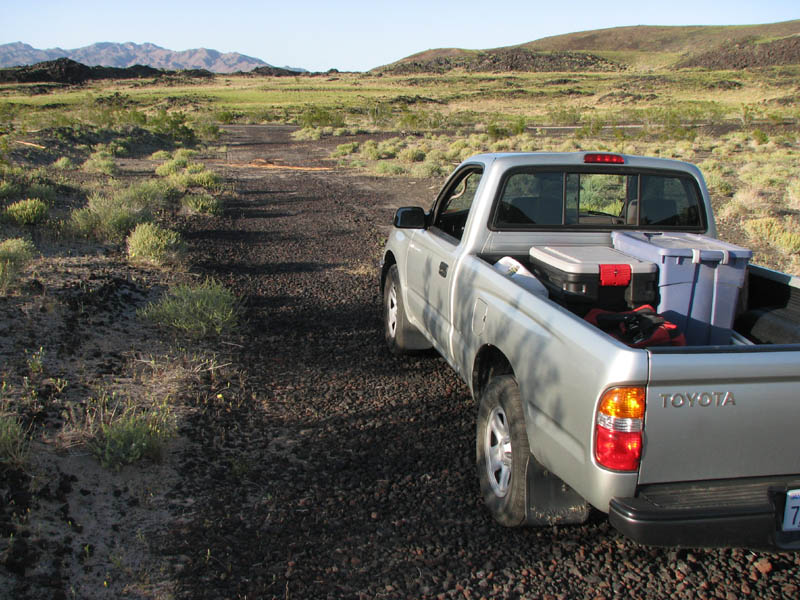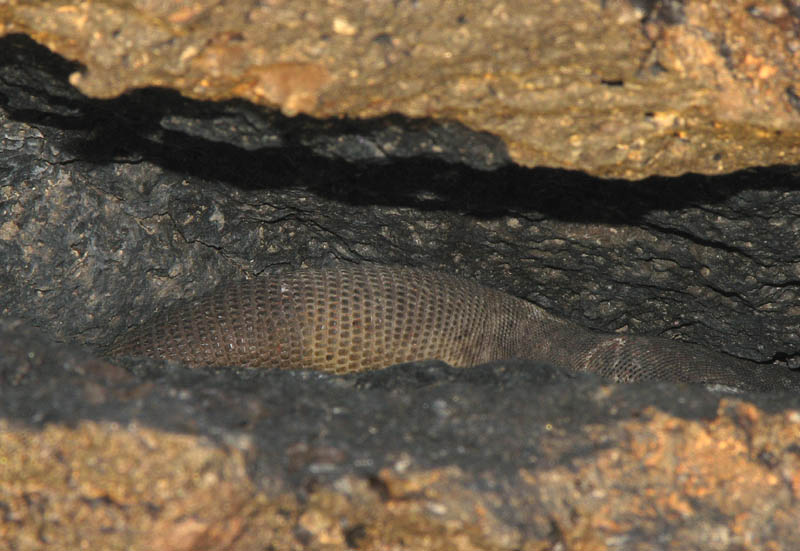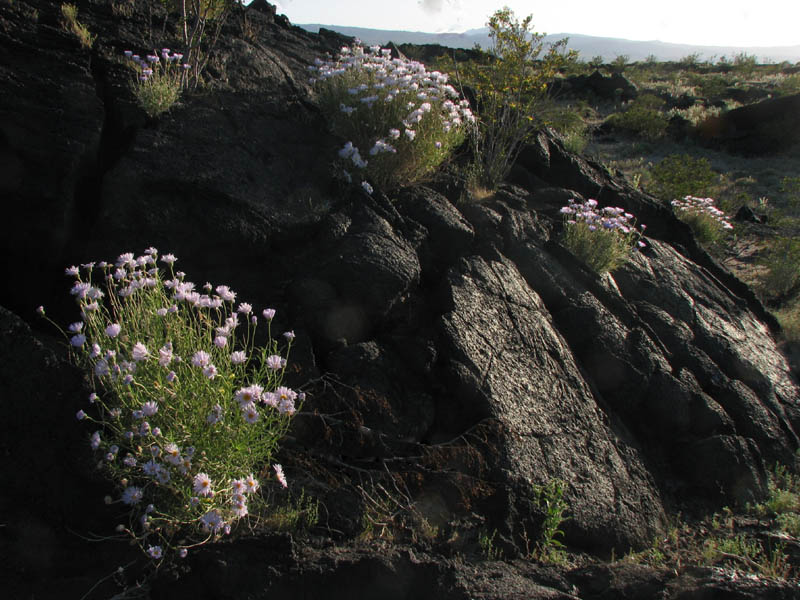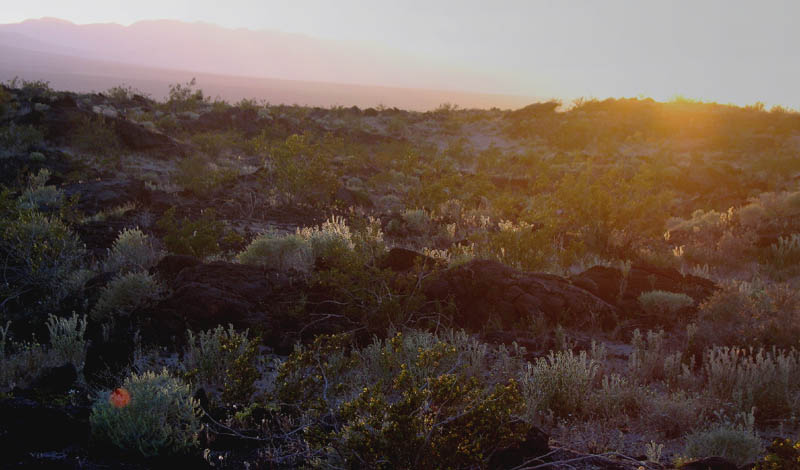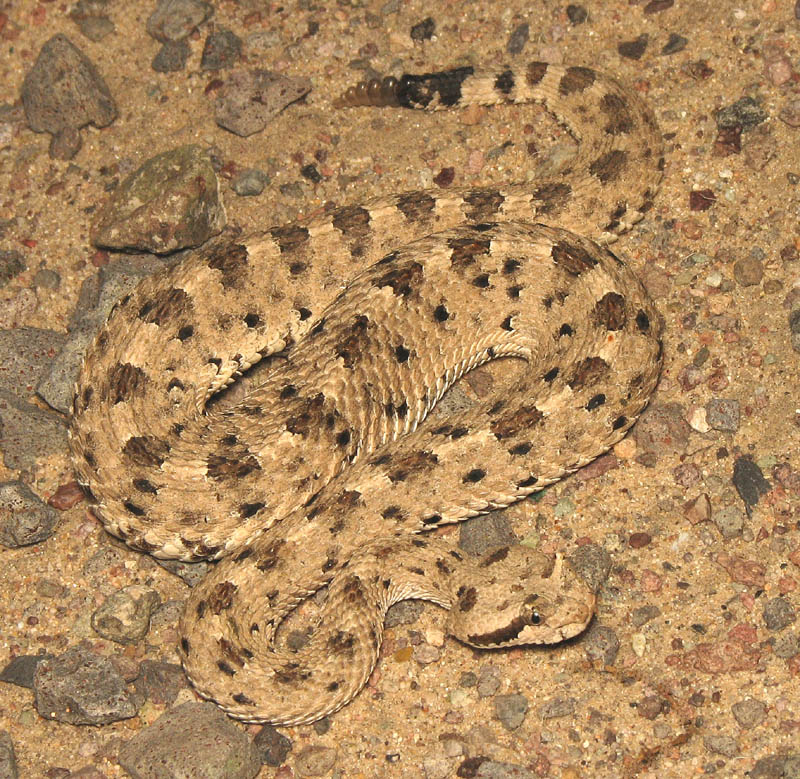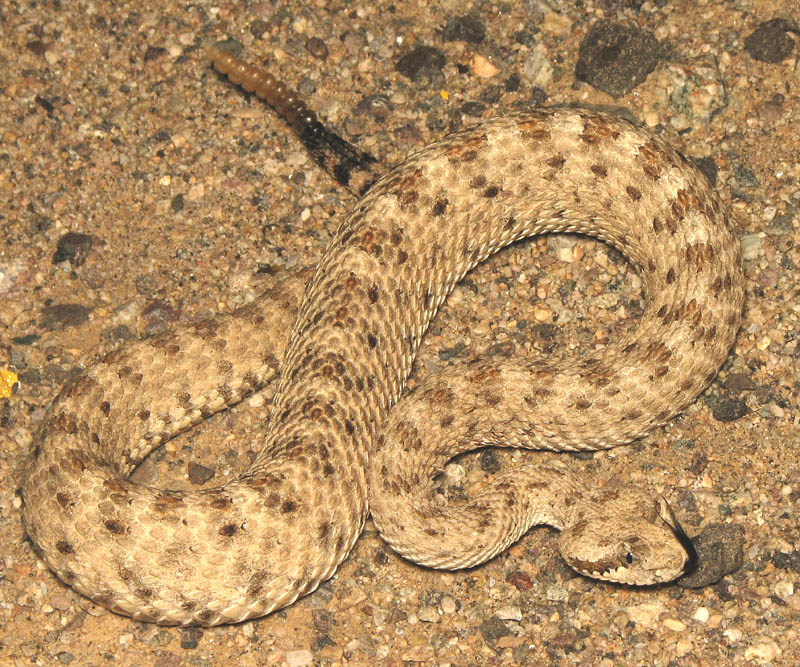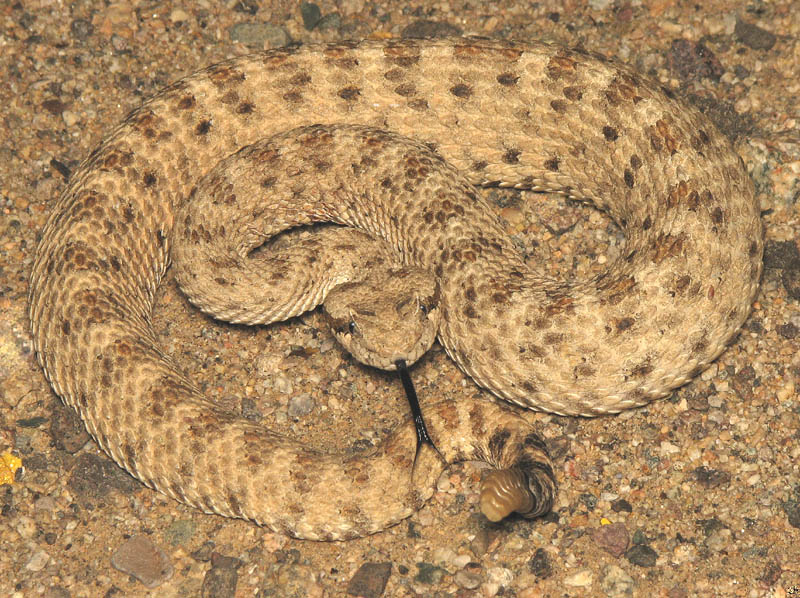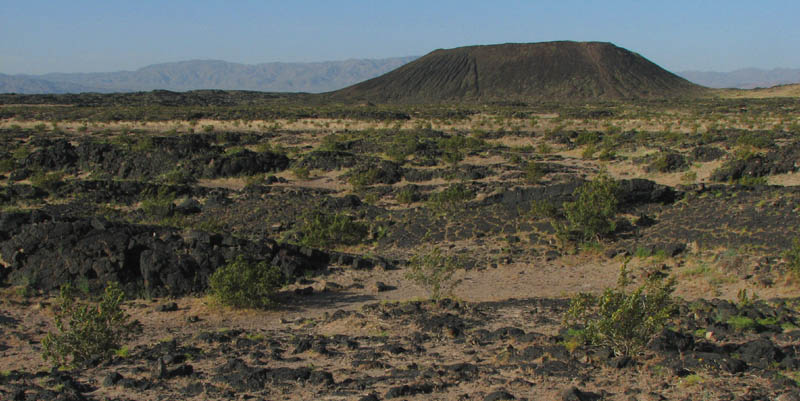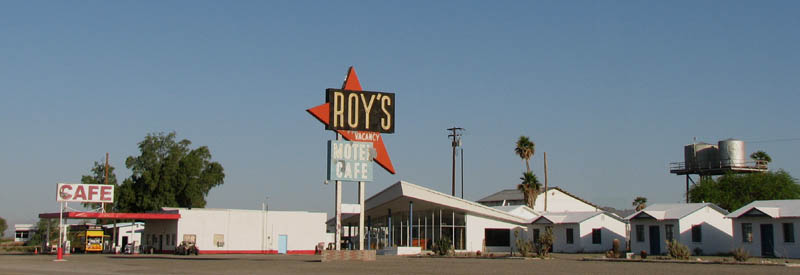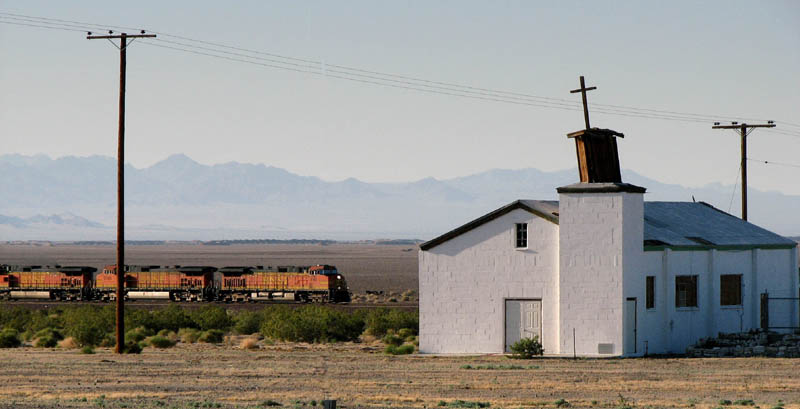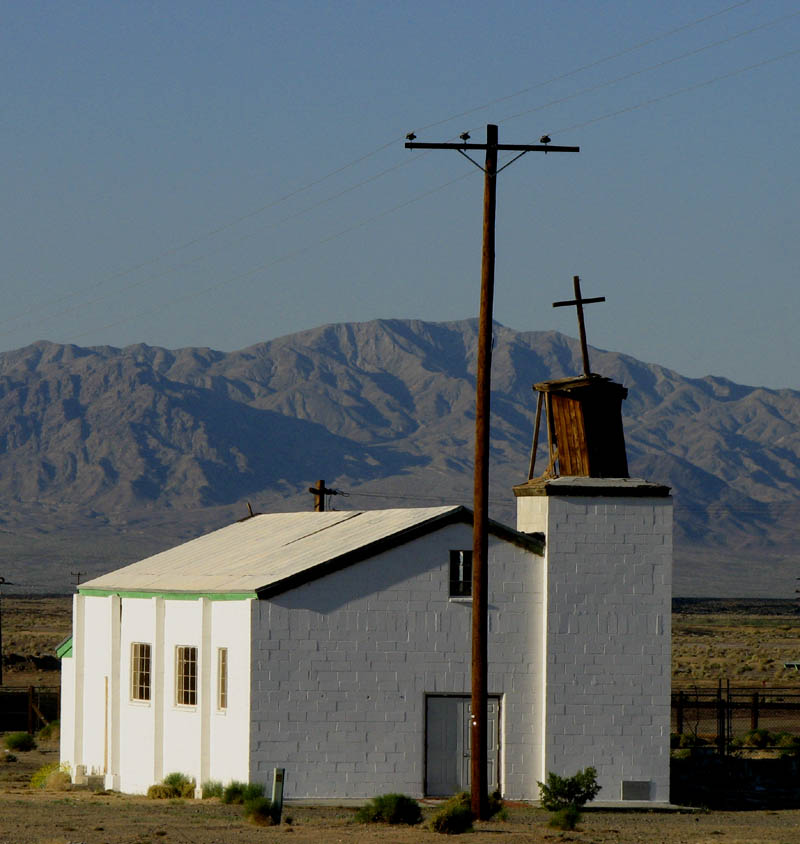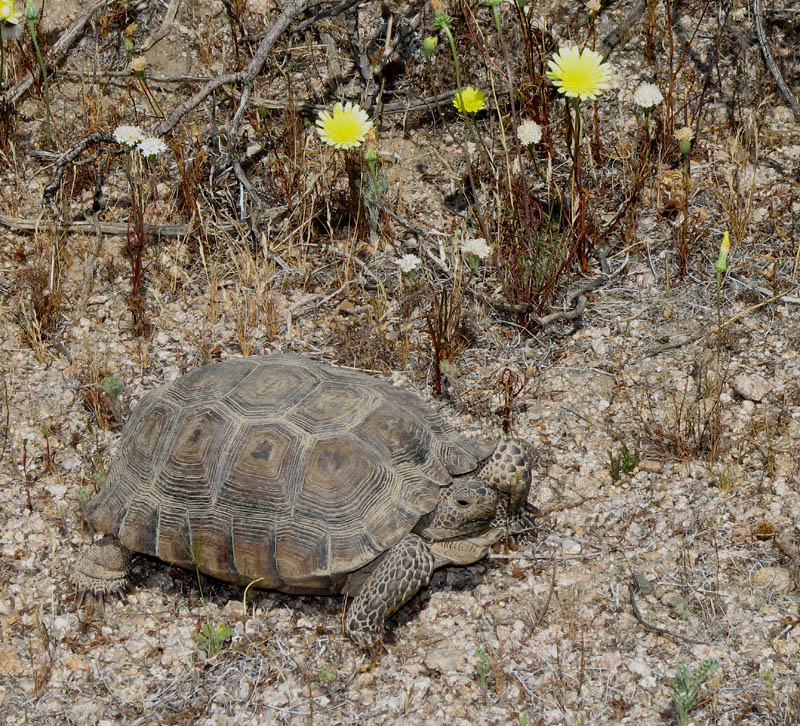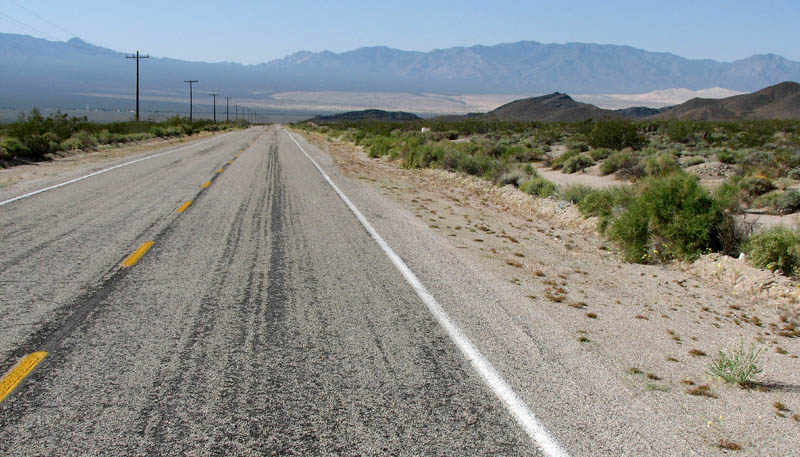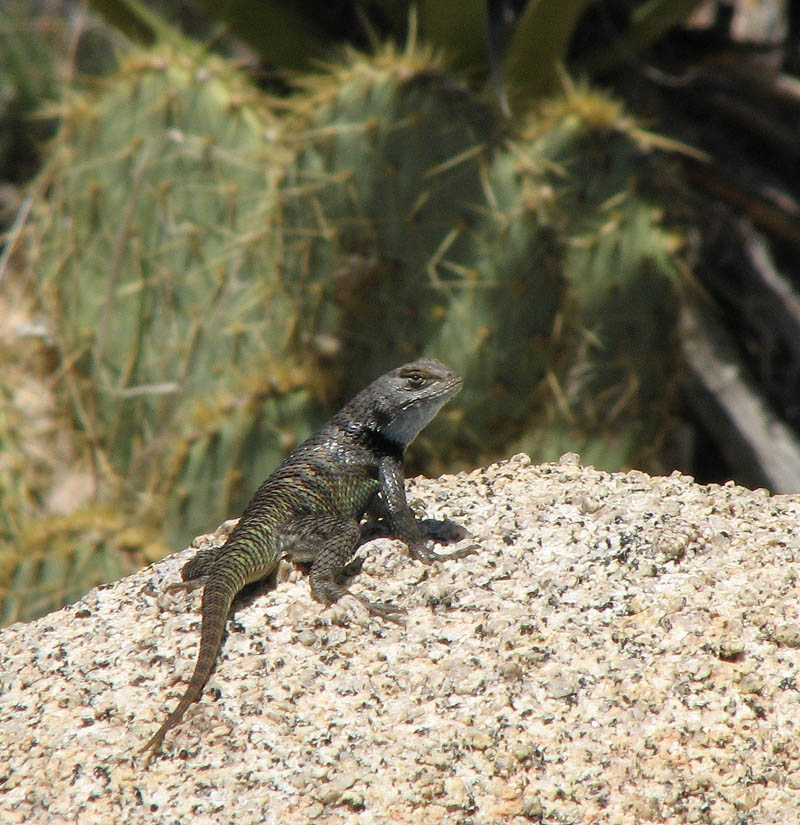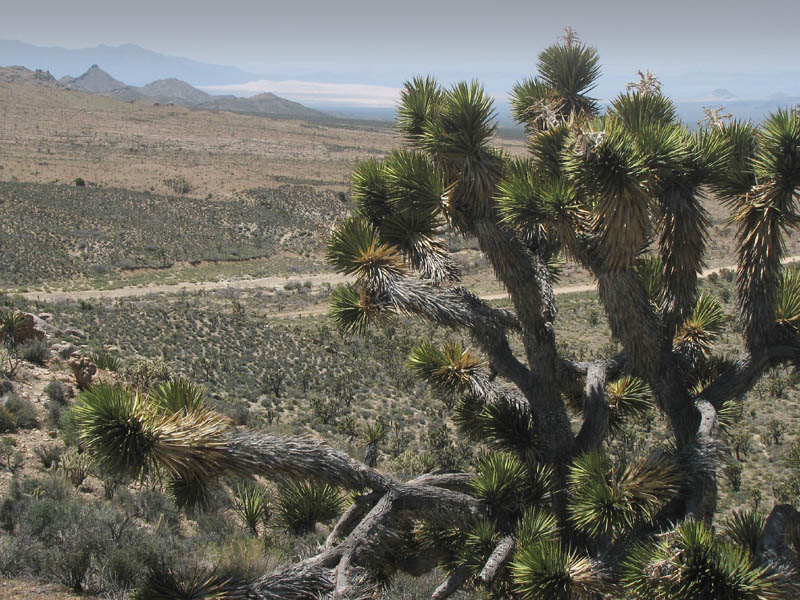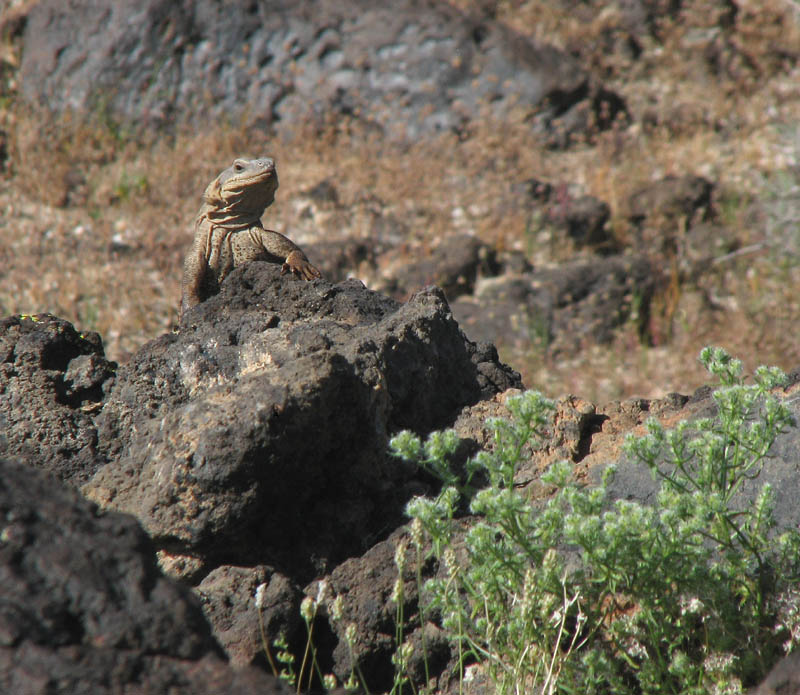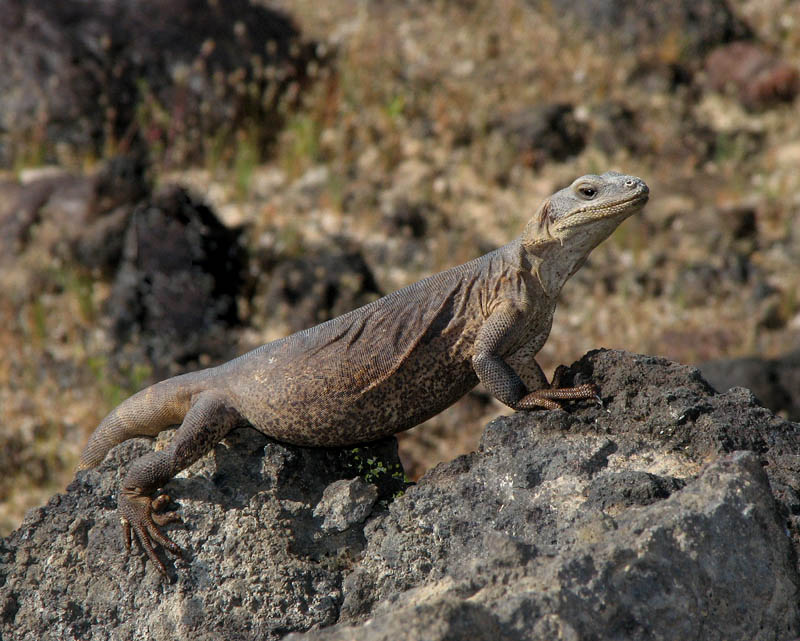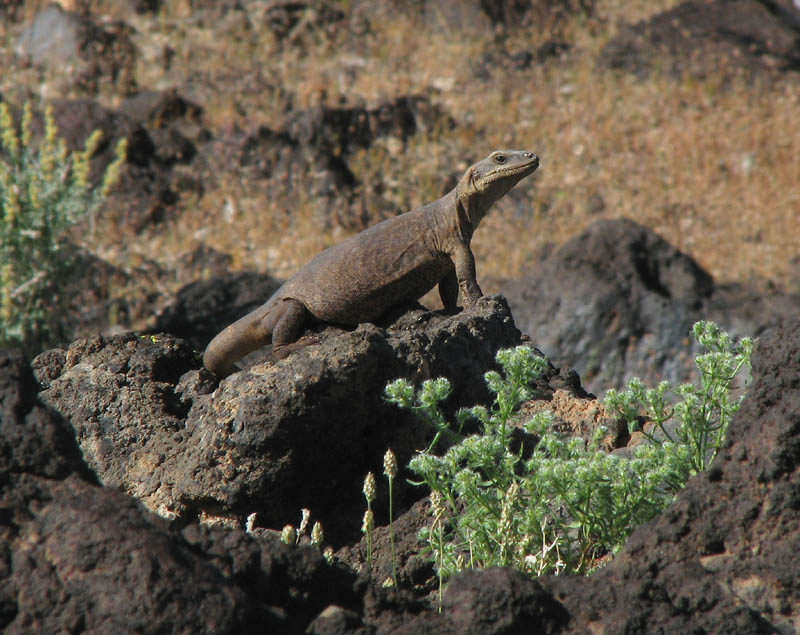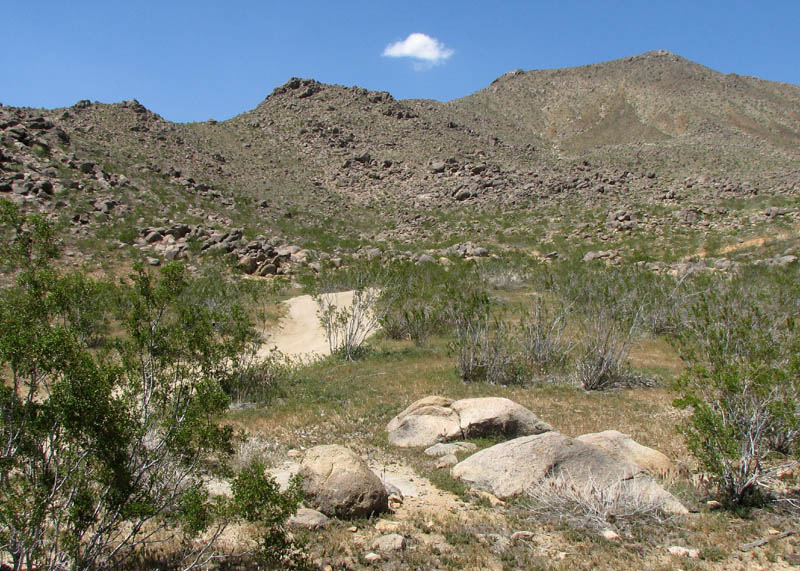|
Locations
Dates
Weather
Species Summary 
|
The weather service indicated a short period of warm temps and overnight lows of up to 60F in the lower elevations of the high desert so, even with a nearly full moon waxing, I decided to try my luck. After last week's trip I figured that even if the moon inhibited the nocturnal activity I might have some good finds during daylight. Well, I'll tip my hand right off the bat here and say, by most standards the trip was pretty weak. On the upside though, even negative results contribute to the learning curve and each trip, regardless of success, increases the depth of my understanding about how things work in the world of field herping.
I arrived at my first destination just after 6:15PM to calm conditions and balmy air.
The evenings walk-about was spent viewing tracks and searching cracks. A few Side-blotched Lizards where about all that was out and about but I did find a surpise in one especially promising fissure.
I tried to find some scenic shots to give a feel for this interesting area.
Sunsets in a cloudless sky are tough and this is the best I, even with some judicious (read heavy-handed) photoshopping.
Once the sun had set I cruised the short entrance road to this area for about an hour with no luck. Then headed off to lower elevations where I hoped the temps would remain high enough to sustain nighttime activity. On the way I found this little gem.
I know, like who cares, another flamin' sidewinder, probably the most commonly cruised snake in the southwest. But, let's consider this - Suppose you had never seen a snake before and knew nothing about them. Then out of the blue you are introduced to a host of North American species, complete with a little bit about the natural history of each. Which might you find most fascinating overall? I believe I would go with the Sidewinder for all the following reasons combined I think it is certainly among the most novel of all snakes.
It wasn't long before I happened upon another one. Look a the nice long rattle on this individual. It's obviously a survivor.
...and since we're on the subject.
Notice how in each of those Sidewinder images the subject just blends right into the background. Much of that is the camofluage but the effect is exacerbated by having to shoot with a flash at night. I use a diffuser on my built in flash and in this particular case, that diffusion is counter-productive. It also didn't help that for some reason I grossly under-exposed the shots and had to pump them up in Photoshop. In either case, I hate taking pictures at night by myself, especially with hots. To much to do all at once - hassle the camera, wait for the stupid flash power to recycle, illuminate and control the snake, and in some cases, mind traffic...violin please. All in all the night brought four live Sidewinders and one DOR but nothing else. I had been hoping to find a Lead-nosed Snake. Admittedly a long shot but that will have to wait. As it was, not even a Glossy Snake appeared which in my experience was out of ratio with the Sidewinders, that species probably a rival for most commonly cruised snake in the Mojave. Temperatures at this elevation of between one and two thousand feet were in the mid 70s and felt warm but the bright moon could well have been a factor.
I awoke at Amboy Crater along historic Route 66. Apparently this is one of the more symmetrical volcanic cones you'll find. So, if you're into cones, here ya go.
The town of Amboy itself was once a popular "pit stop" on the way to Las Vegas until the mid 70s when I-40 was opened to expedite Vegas bound travelers. It is now a veritable ghost town but still popular as a stop for history and photgraphy buffs. I too find it somehow interesting and since the herping was a bit slow please allow me to indulge.
This is pretty much the same image you'll see on any google search about Amboy, CA.
Apparently trains are a big deal here. In fact, judging by the frequency of long freight trains, they're a big deal period. Lots of goods moving too and fro on the rails.
That old church caught my eye. There's just something intriguing about that crooked steeple, like it's right out of a spaghetti western.
Back on the road I decided to try my luck with some morning cruising at a location which served me well the week before. In addition to the usual Whiptail Lizards crossing the road this day a couple of the lizards zooming across the road fit another description and that could only have been of Leopard Lizard. Too bad none would permit approach. This was true as well of a few I saw during hikes later in the day. Odd that I saw not one which might have been this species only one week earlier. Could this species just now be awakening for the season?
Finally, around 10AM, I came across this lucky pedestrian just exiting the asphalt. I would normally avoid picking one up but for safety's sake I took it well away from the road to release it and snap some pics. Fortunately it didn't waste vital fluids by defensively dousing me with a wash.
Here's the view from where I found the tortoise. If you herp the eastern Mojave, you'll probably recognize this location.
For the middle of the day I decided to try my luck hiking at a higher elevation and so found myself on a rocky hillside over 4500 feet. The air was in the high 70s but the wind was calm and even though the overnight low was probably in the high 30s I was hoping the warm sun might intice something interesting out of the jumbled rocks.
Probably not the highest on my list to see but a welcome sight on such a slow day was this Desert Spiny Lizard. I enjoy stalking wary lizards for photography and so far this species has proven one of the most elusive. I've cropped this image tightly and still this is all I could get. But I know that one day, one of these guys will make a wrong move and the lizard papparazi will be all over it.
Even with all the rain we've supposedly had this season, conditions seemed pretty dry overall, even at this high altitude, where I expected more greenery.
After a couple hours of that I took a short lunch break then headed off to another location across the valley. I found a couple Zebra-tails and one more long distance look at a Leopard Lizard...or could it have been a Desert Iguana? Whatever these lizards were on I needed some of it. Once back at the truck a "Monster" energy drink would have to suffice, but before that happened I came upon this ghostly visage.
"Alas poor Yorick"...looks like the ol' boy just ran out of gas.
Shortly after that encounter my binoculars resolved a huge Chuckwalla teed-up on a hillside boulder at a distance of at least 150 yards (or a well struck 8 iron that is). This one was a real looker, with a bright rusty red back and contrasting light tan tail. Knowing it would be skittish I planned my stealthy approach to maximize cover and acheive an optimal lighting angle with respect to the sun. I then carefully intitiated my advance at which point the suspicious saurian immediately dove for cover never to be seen again. Back at my truck the ice cold "Monster" provided welcome consolation and a fresh outlook after a trying day. A lava field strewn with basaltic boulders polished with desert varnish lured me to try once more to find and photograph a Chuckwalla. After a brief survey of the area using my trusty binoculars I was somewhat dissapointed to find no lizards up basking so I headed back to my truck to move along. On that short hike back I took a gander ahead and saw a big female 75 yards ahead, directly in my path. The afternoon sun was behind her and my only chance for a good opportunity would be to circle around and move in from the opposite direction. Just as I completed the manuever and aligned myself with a bush to conceal my approach, the lizard shot off its perch, and sped over the rocky ground onto another boulder some 40 yards further away. My cover was blown but my camera was ready in hand, so rather than abandon the pursuit I did my best to regain her confidence and at least opt for the long distance "habitat" shot.
I walked very slowly, swaying gently foot over foot, doing my best to minimize my profile and imitate the movements of a branch in the wind. I've seen herons use this same technique when stalking lizards and I've since used the method many times to advantage. To my suprise, the lizard stayed put, but kept keen vigil, just peeking over the rock, as I moved painstakingly closer. Finally I crept my camera toward my eye to focus and took what I assumed would be my only shot, and of head and shoulders only. I was just close enough so that at maximum aperature my flash would carry just far enough to soften the hard shadows cast by an oblique sun.
Now the game was really on as my next series of moves should get me within distance for a decent portrait. If only she'll permit three more steps. But those would be awkward steps as a couple small boulder lay right in my path. I somehow maintained my balance as I brought one foot up over the first boulder and down to solid ground, but in order to move forward I'd have to weight that foot without increasing my height to appear taller, closer, and so more threatening from her vantage. I expected her to be gone in a flash any moment but she remained stoic. I snapped a couple pics, carefully refocusing and checking my settings. Then I attempted the next tricky move which would bring me in tight. My hands were a little shaky now as caffeinated blood pumped through my veins, but the excrutiatingly deliberate move came off as smoothly as cocoa butter over tan lines. Now if she'd just rise up from behind that rock and give me a pose. It must have been my lucky day for then, as if reading my mind, she hopped up on the rock and showed it all for the camera.
Leapin' lizards, did I score or what!
After I'd had my fill I backed-off just as slowly as I come and took one last parting shot, just for the memories.
That evening found me again behind the wheel, my watch ticking off minutes as my odometer ticked off miles. I descended along with the temperature of night air hoping that even with a high moon at least something would be stirring to add some excitment to the quest. Finally at the peak of "magic hour" and on what I decided would be my last run if unsucessful, a subadult Glossy Snake shown in the high beams. The young snake was cool to the touch yet nervous and whippy so I let it go quickly off the road, newly committed to another series of passes just in case something a little more interesting would show up. Shortly after that I noticed another vehicle stopped a couple miles up the road with flashers on. I knew they were likely fellow herper who'd found something so I rushed ahead, interested to learn their fortune. They informed me that they had just found a small Long-nosed Snake, which would have been a welcome find for me this night. We parted ways and after a couple more unfruitful passes I decided to head off toward a good nights sleep.
The next morning I headed back to Ventura to stop at a well known herping location along the way. A couple hours of climbing amongst a boulder strewn hillside
revealed more hyper-skittish Desert Spiny Lizards and just one Chuckwalla which I found only by its tail hanging out from a rock crevice.
If I learned one thing on this trip it's that you can't rush Mother Nature. But then, I'd rather miss early than late and there's still all of May to look forward to as herp activity continues to rise along with temperatures, even if it is dragging its heels like a stubborn mule. |
